|
Animation Art - Production Art - Different Types of Cels
|
|
Cel or "Celluloid"
|
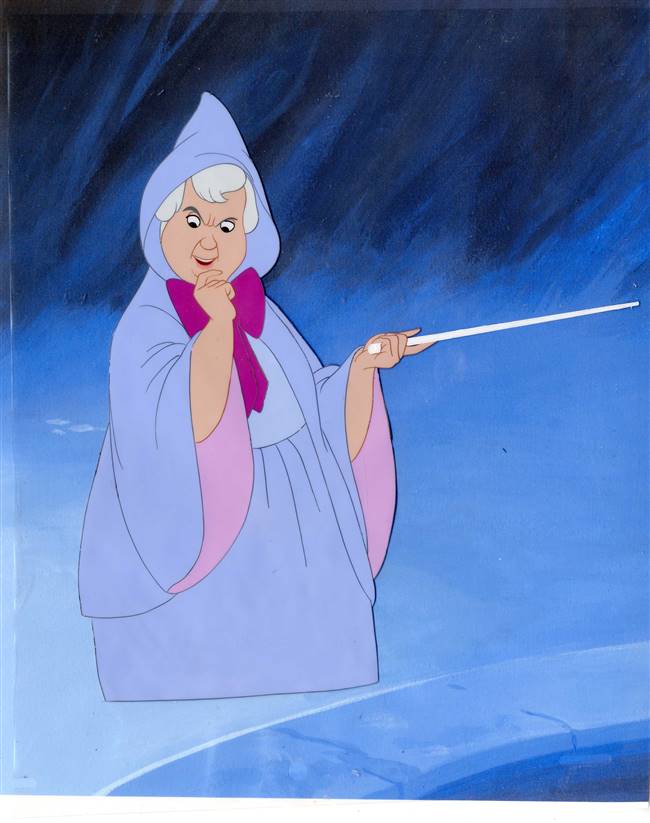
|
A sheet of clear acetate or nitrate which is hand-painted and then placed over background and photographed. The outline of the character (hand-painted or xeroxed) is applied to the front of the cel. The colours are hand-painted onto the back of the cel.
|
|
Courvoisier
|
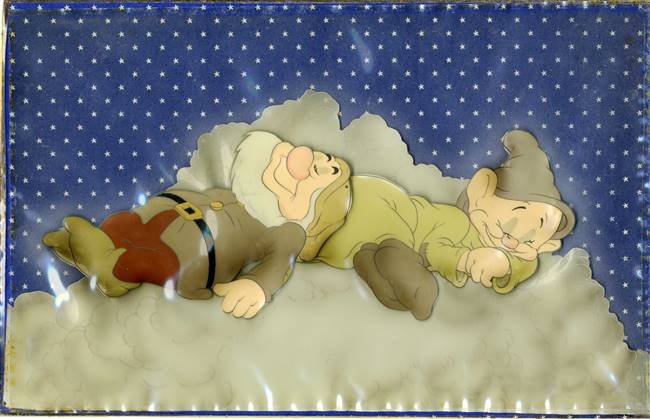 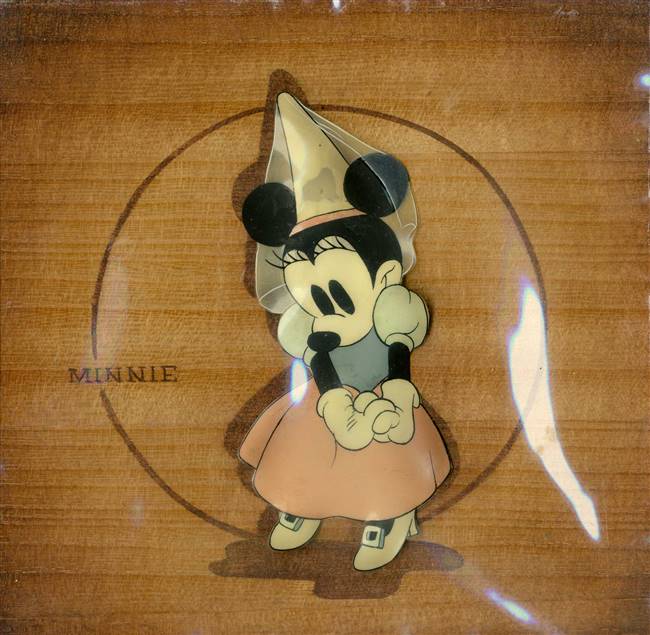
|
A production cel set-up created and sold by the Courvoisier Galleries in the late 1930s/early 1940s. Characters are most often trimmed to image, glued to the background, covered with a protective top cel. In the case of a multi-cel set-up, cels are always from the same film, but may not all correspond to the same moment in time.
A number of distinctive backgrounds were used. Wood veneer, polka dots, stars, and hand-painted watercolour backgrounds.
The original set-ups were framed in an off-white mat, penciled name of the character written, and a "WDP" stamp. Labels were attached to the back.
Often, the cels from Dumbo and Bambi were laminated.
|
|
Cel Set-Up
|
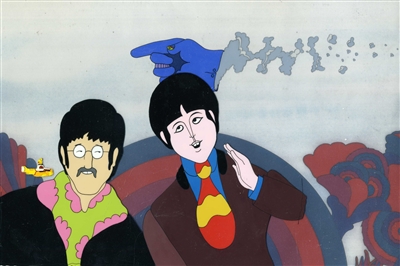
|
A combination of two or more production cel levels. On our site, set-ups are simply called production cel regardless of the numbers of levels. For more information on the exact number of layers of a particular cel, please email us.
The individual cels for a cel set-up do not necessarily appear at the same time when traced in the show. Sometimes, the cels are placed together in a set-up to maximize the aesthetic effect of the piece.
Cel set-ups are without a production background and usually come with a reproduction or custom background. If the set-up includes a production background, it is termed a master set-up or a key master set-up.
|
|
Colour Model/Colour Test
|
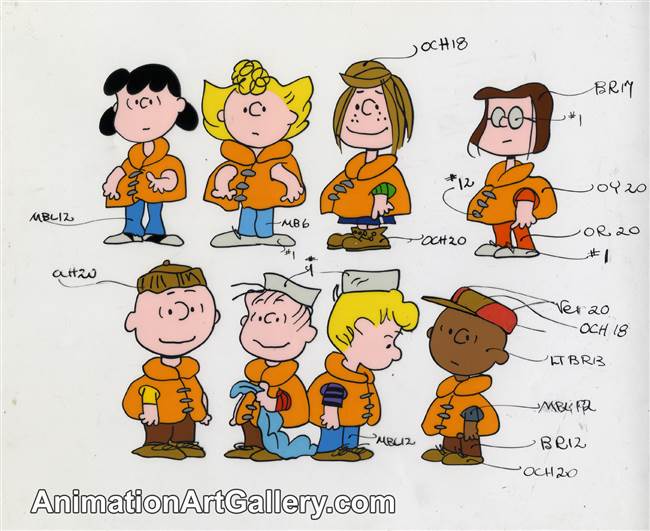
|
A cel created by the Ink and Paint department for accurate colour-referencing during production. Colour test cels have colours different than the final characters.
|
|
Disneyland Cel Set-Up
|
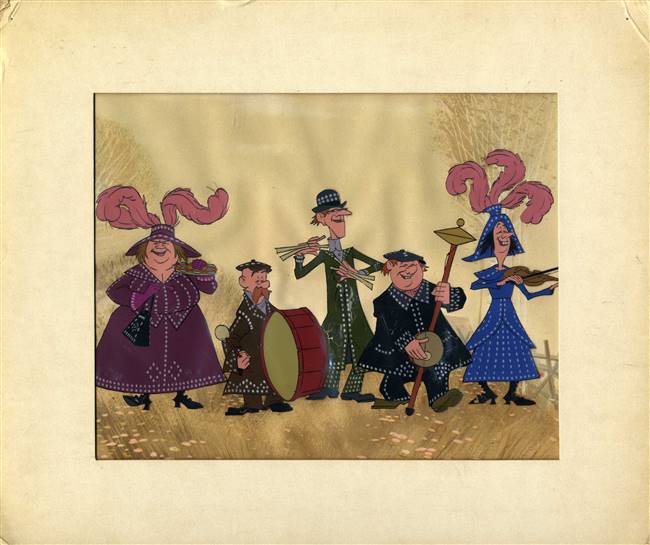 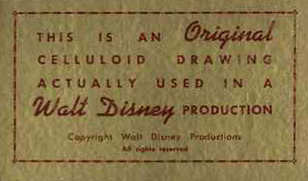
|
Production cels sold at Disneyland from the mid-1950s to the early 1970s. The cels in these set-ups are trimmed and against either a litho background or against solid color background. It is common for cels in these set-ups to be adhered to the background. Disneyland cel set-ups in their original matting have a gold seal attached to the back of the mat. Occasionally you will find Disneyland cel set-ups that have a cel from one film and a background from another. For example it is common to see a Jungle Book cel on a litho of a Sleeping Beauty background. These are also referred to as Disneyland Art Corner cels.
|
|
Disney Seal
|
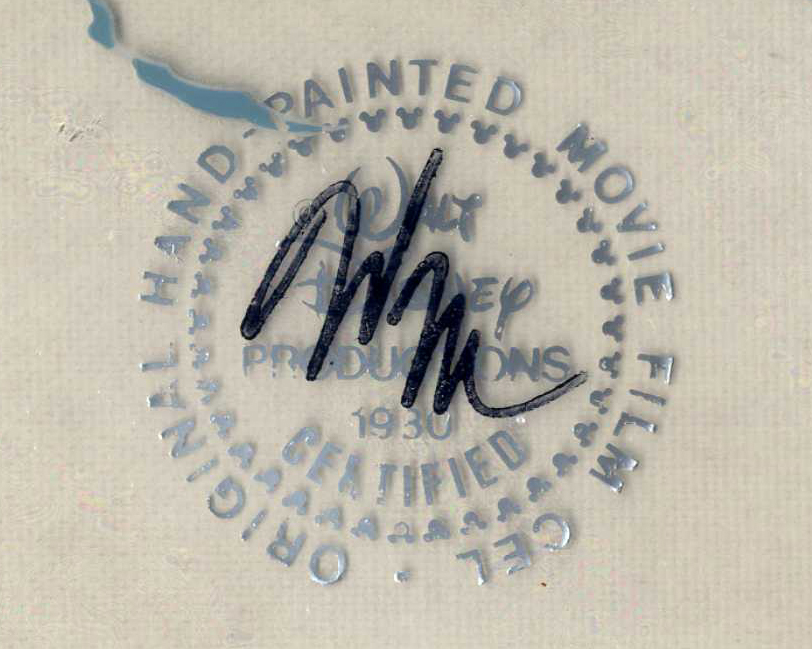
|
Mostly sold in the 1970s. Full cels laminated and embossed with "Original hand-painted movie film cel". These seals are larger than the ones used today. Many Robin Hood and Rescuers cels fall into this category. Occasionally, a Sleeping Beauty cel will have been sold in this manner.
|
|
Title Card Cel
|
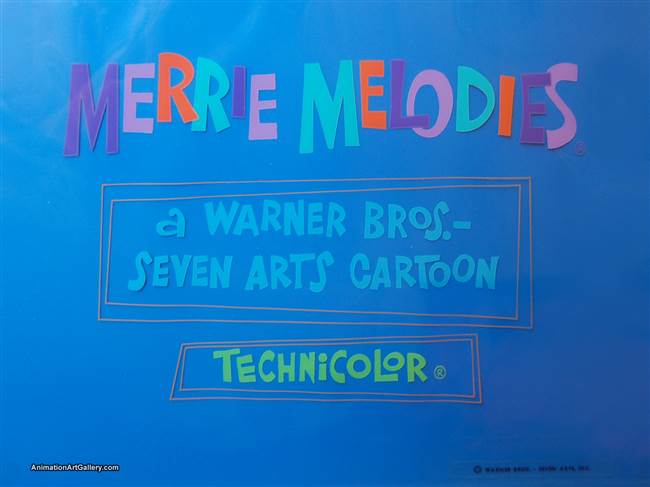
|
A cel from the opening or closing sequence of the show or feature where the list of names comes up or the title of the show.
|
|
Animation Art - Production Art - Drawings
|
|
Animation drawing
|
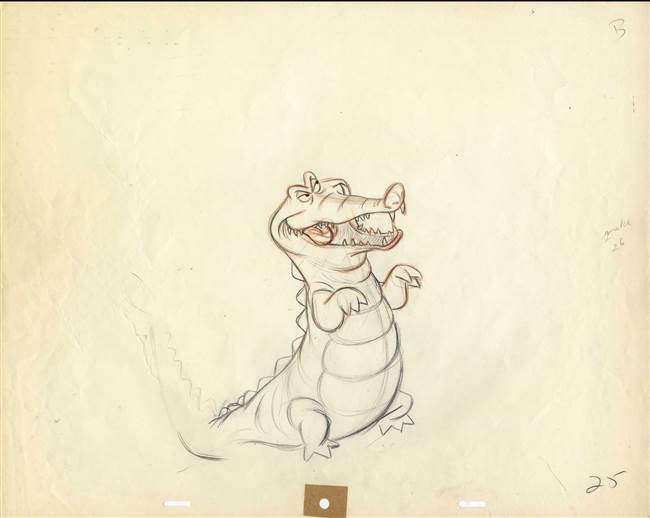
|
Refers to an original, one-of-a-kind production drawings created by an animator from which the cels are later created.
|
|
Rough
|
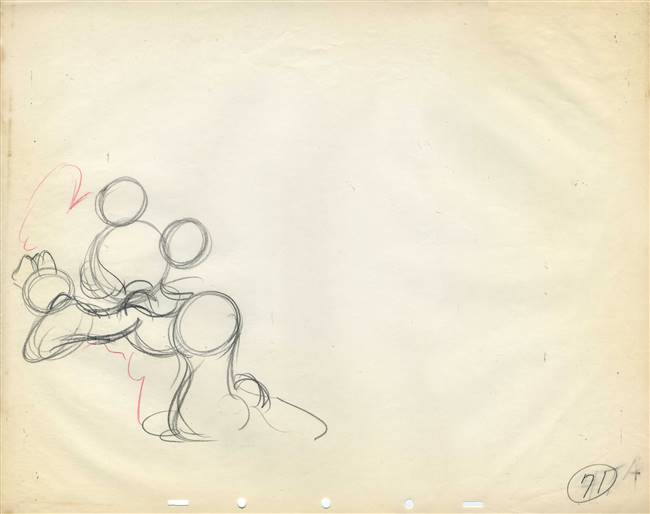 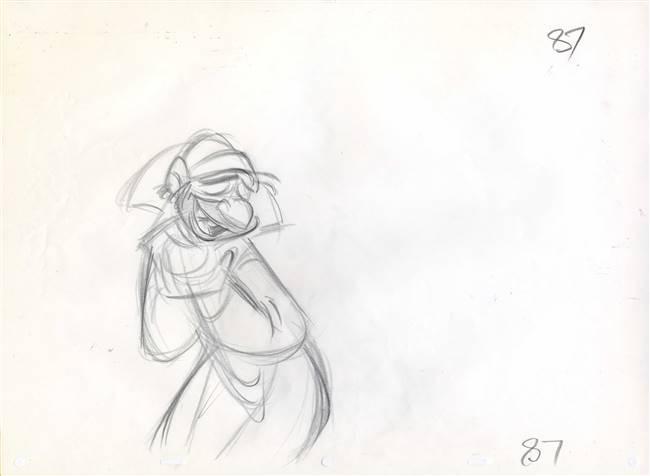
|
Production drawing done by an animator to indicate the position and pose of the character. Later, a clean-up drawing is created by referring to, or drawing directly over, the rough. The cels are then created by tracing or xeroxing over these drawings.
|
|
Clean-up
|
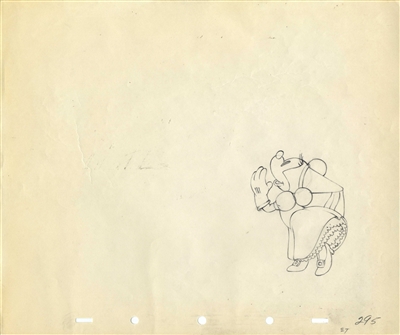
|
Production drawing done by referring to the rough drawing. From these drawings, the cels are then created.
|
|
Key
|
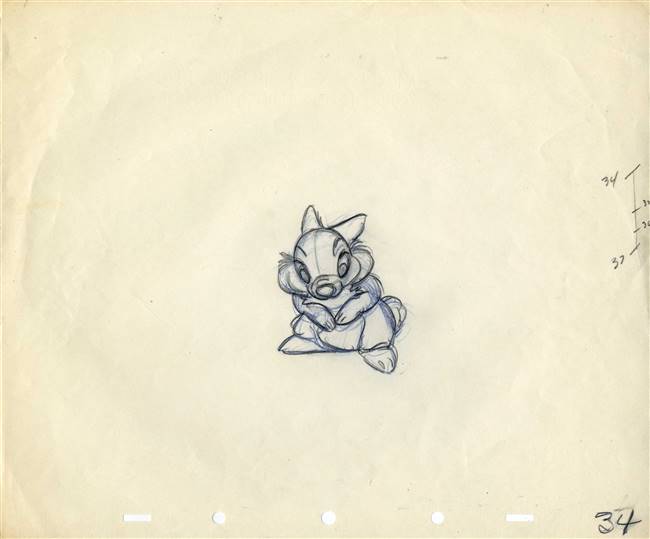 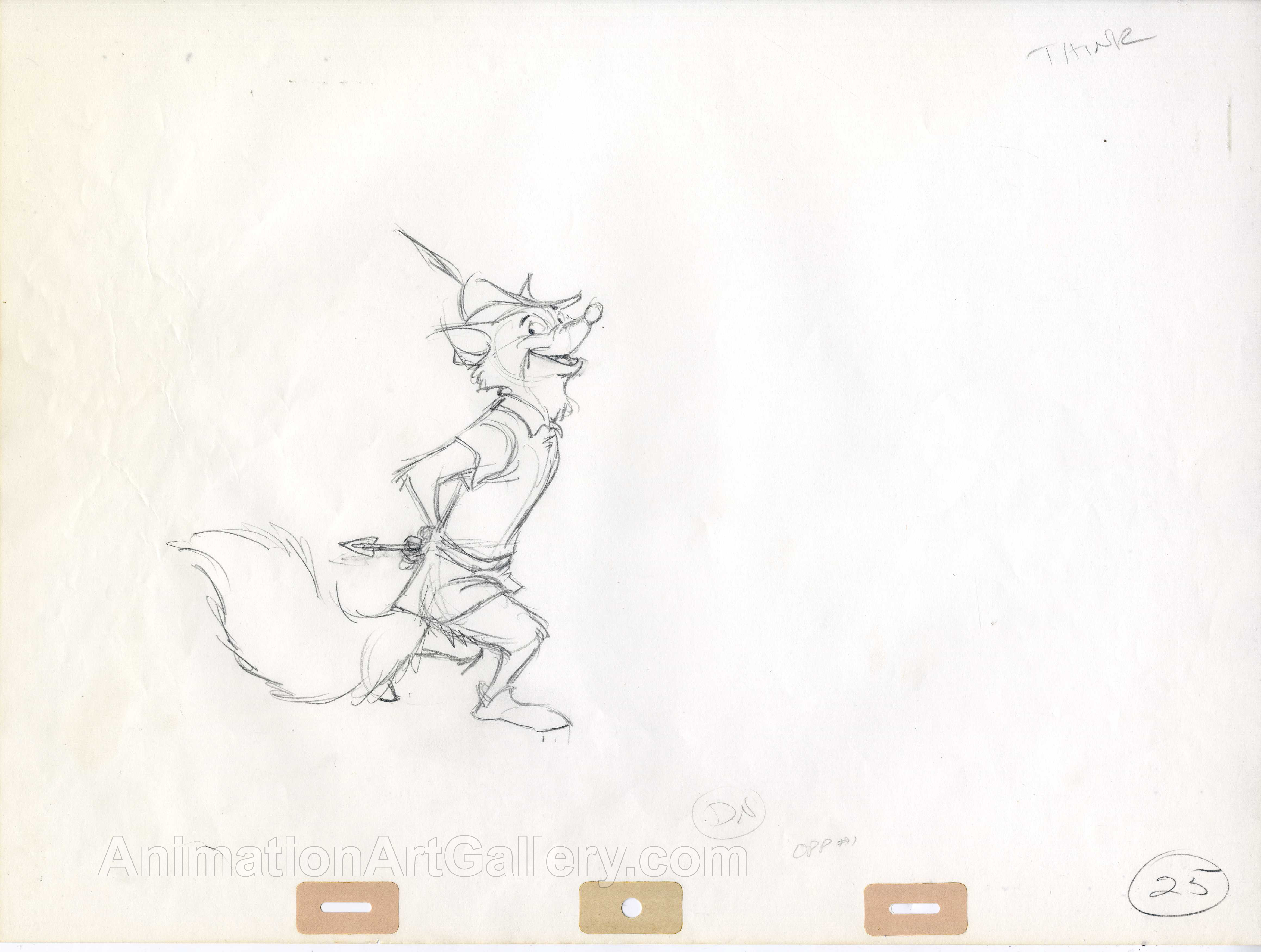
|
Production drawing done by the head or lead animator. The "key" is a small chart on the side that indicates the beginning and ending of the movement as well as an indicator as to the speed in the timeline.
|
|
Colour Reference Drawing
|
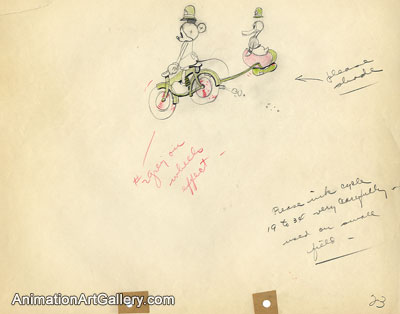
|
Production drawing which is coloured in various sections with notes pertaining to the paint colours to be used by the ink and paint department. These are pretty rare.
|
|
Layout
|
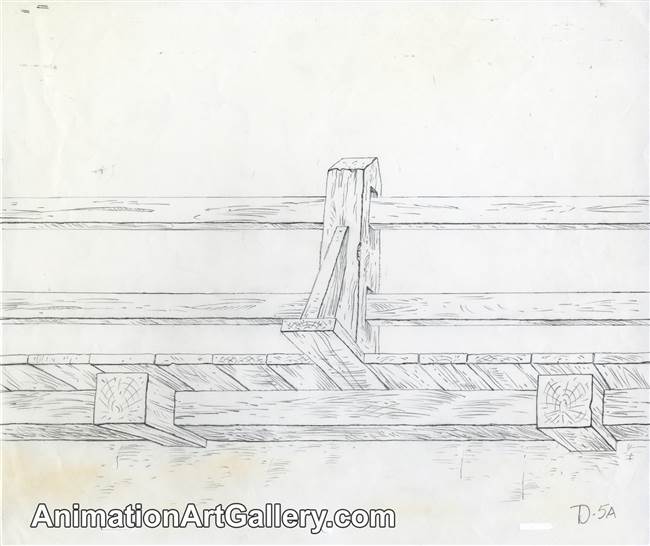
|
Very detailed production drawings depicting master backgrounds, or showing camera movements with sketchy indications of the placement of the characters.
|
|
Model Sheet
|
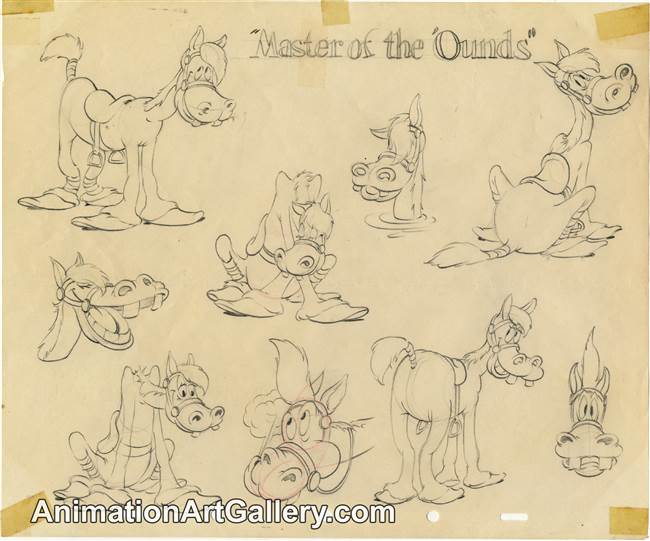
|
The original drawings that were used to create photostats. They are original pencil drawings of a character usually shown in several different positions or from various angles.
|
|
Animation Art - Production Art - Conceptual
|
|
Concept Piece
|
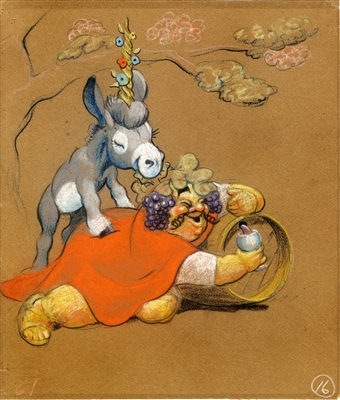
|
A drawing that was created during the development of a character. Often, these pieces will not closely resemble the final character. They can be done in a variety of mediums: pencil, ink, pastels, etc.
|
|
Storyboard
|
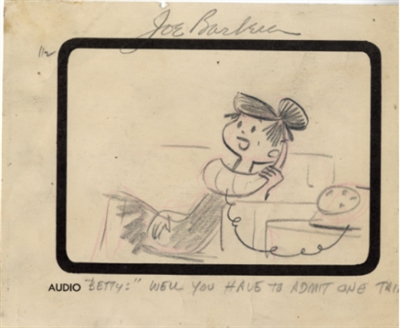
|
A series of complex production drawings, each depicting a mini-scene, which are created while defining the storyline of the film. Sometimes found in sets or a number of them were done on complete pages. If very small, are often referred to as “thumbnail.”
|
|
Animation Art - Production Art - Backgrounds
|
|
Key Master (Matching) set-up
|
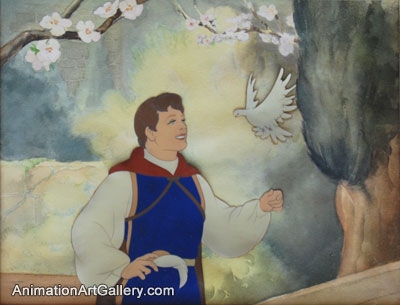
|
A production cel or cels paired with their original matching production background as they appeared at the same moment in the actual film.
|
|
Master Set-Up
|

|
A production cel or cels are paired with a production background from the same film, but they do not appear together in the film at the same moment.
|
|
Master Background
|
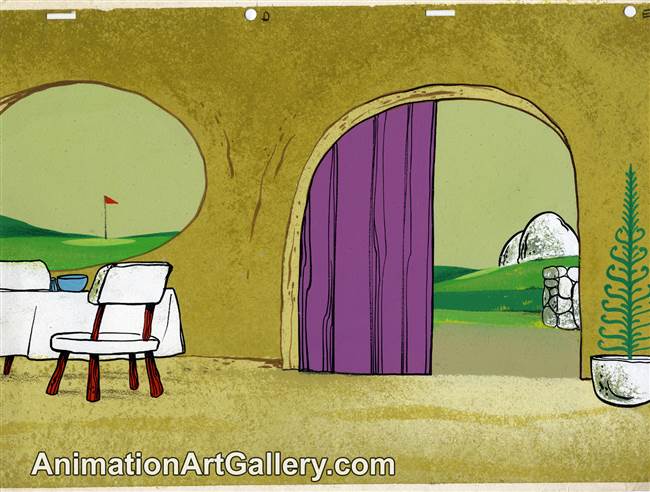
|
A production background created for use in the production of an animated film and not accompanied with a cel.
|
|
Production Cel and Production Background
|
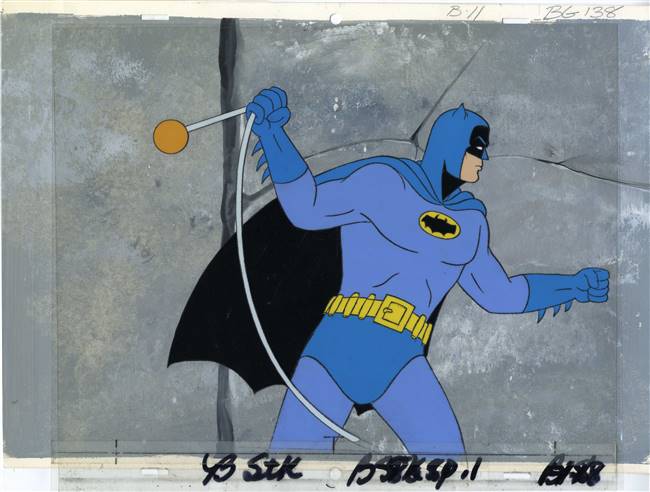
|
A production cel with a production background where they are not matching from the same film or time period for a series. Or we have not been able to trace the piece in the cartoon to confirm if they match.
|
|
Edited pre-production background
|
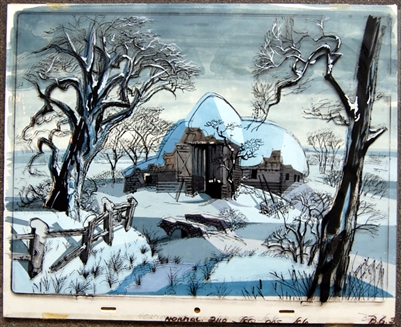
|
The production background does not appear in the film because it was edited and removed from the final cut.
|
|
Animation Art - Production Art - Animator's Tools
|
|
Photostats
|
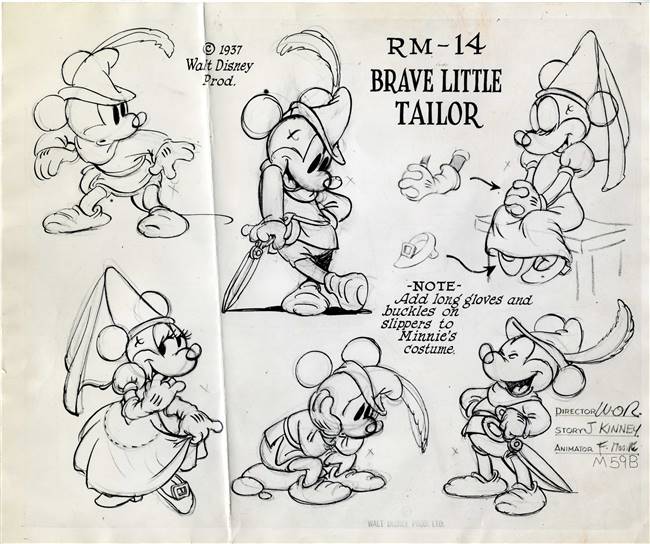
|
Photostats were used in the process of making probably every cartoon. Photostats were made by the animators in the studio at the time of the film. The term photostat refers to the copying process which was used back then. In our experience, they are most often acquired from the estate of an animator. Photostats were made from original model sheet drawings showing the characters in many poses. Sometimes animators made their own model sheets. The photostats would be produced and given to the various departments to insure consistency among all of the animators working on a project. Hundreds of photostats would be made from the original which usually had various drawings trimmed and mounted on a board. They most often have pin holes at the top of the pieces as the animators would pin the drawings above their desks to refer to so that all of the drawings are uniform in their look.
|
|
Animator Gag Drawings
|
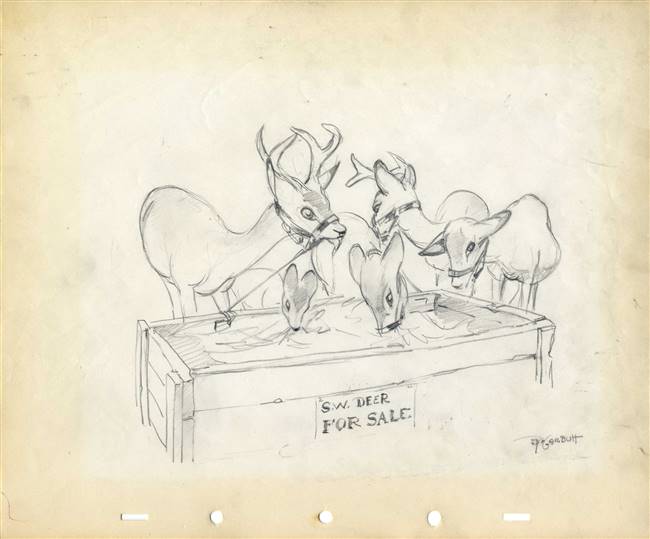
|
Done by the hand of the animator, gag drawings are "joke" drawings which were done in the animation studio to create a lighthearted atmosphere among the artists. They are usually acquired directly from an estate and are satirical in nature.
|
|
Character Drawing
|
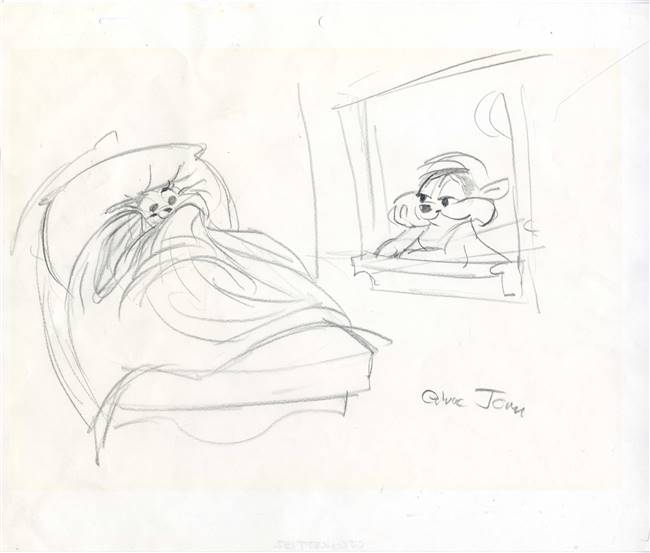
|
An original drawing hand-done by the character’s creator for someone, most commonly a request from a fan. They are usually signed and sometimes dedicated. These were not used in the production of a cartoon or strip,but are still extremely collectable.
|
|
Animation Art - Reproduction Art - Cels
|
Limited Edition Cels
Click here for a special page explaining the differences between original and Limited Edition art!
|

|
A non-production hand-painted cel created specifically for collectors. Produced in limited quantities, they are most easily identified by a "fraction" (39/500) in the lower right-hand corner. They were not used in a film, and have merely been created to resemble original production art, whether by reproducing a scene, or more recently, creating new scenes which often mix characters who do not traditionally "belong" together. Most of this art is very new-1980s-present, but a few, most notably Gaucho Mickeys, or Der Feurer's Face Donalds, are older- these 2 from the 1940s.
|
|
Monocel/One of One
|
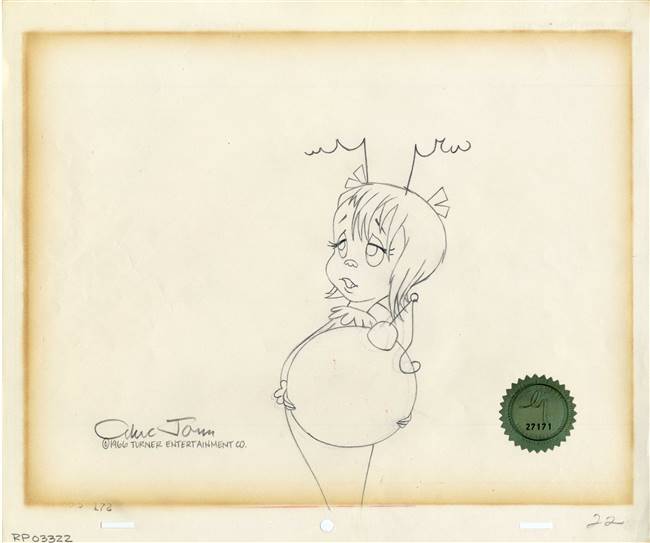 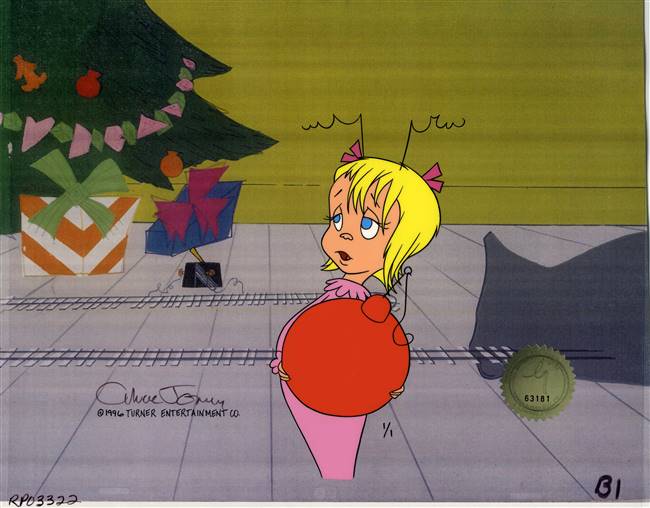
|
With the advent of new technologies, animation art has changed dramatically. Most animation is now done with the computer, so the only original production artwork available for the newer shows are the production drawings and concepts. As a reaction to this change, studios have developed a way to still put hand-painted cels in the hands of collectors. Their answer is the 1/1 or Monocel. This type of hand-painted cel is created post-production at the studio level and is a one-of-a kind reproduction created off of a drawing. It will still have a fraction written on the cel but the fraction will be 1/1 because it is one out of an edition of one, hence, the term "One of One".
|
|
Serigraph cel (Sericel)
|
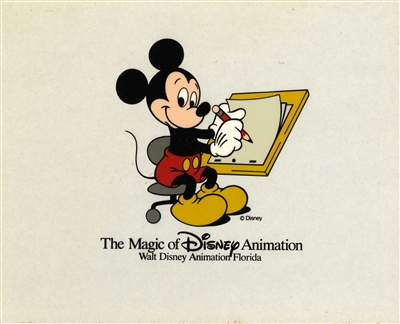
|
A non-production silk-screened cel similar to a limited edition cel, but no work is done by hand. Often produced in editions of 5000.
|
|
Publicity or Promotional
|
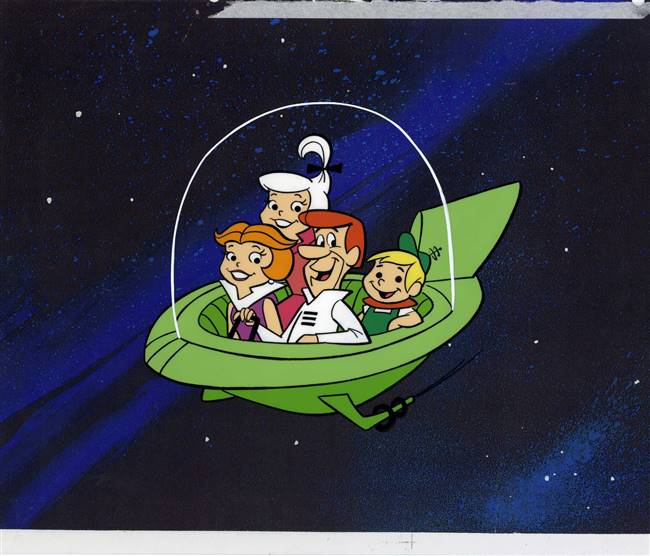
|
A non-production cel created for promotional purposes. Characters are depicted in an "ideal" pose.
|
|
Animation Art - Reproduction Art - Backgrounds
|
|
Reproduction
|
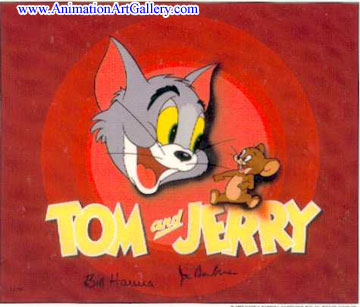
|
A xerox, lithograph, or photographic copy of an original production background. The majority of our production cels will be paired with a reproduction background hand-selected by our archivist as the best fit visually to accompany the cel.
|
|
Custom/hand-prepared
|
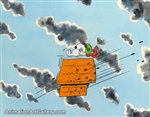
|
A newer background hand-painted by an artist for the specific purpose of enhancing a cel.
|
|
Fine Art - Limited Editions
|
|
Giclee (j'clay)
|
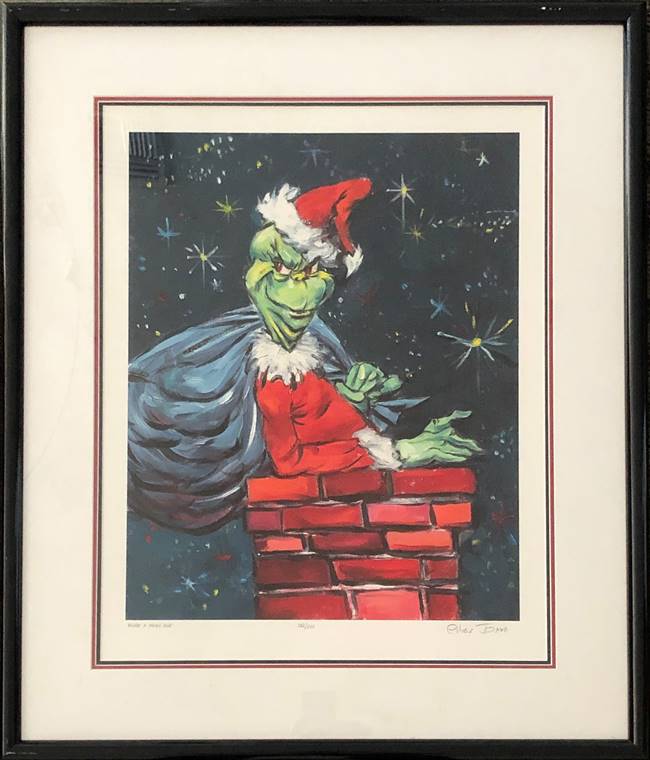
|
Giclees (j'clays) are the latest in reproduction animation art. According to Linda Jones Enterprises (distributer of Chuck Jones' art), the giclee is "a french word which means 'spray of ink'. Because no screens are used, the prints have a higher apparent resolution than lithographs...more than four million droplets per second...the prints are lush and velvety with the feel and luminosity of a watercolour." Gicless are printed on either paper or canvas. One of the reasons why they are such a unique form of printing is because they can be done on canvas and as a result can closely mirror the look of an original painting. They are also sometimes hand-embellished on top of the print.
|
|
Lithograph
|
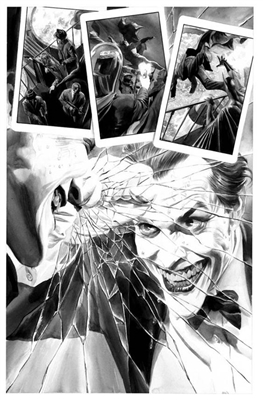
|
A printing process created by stone or metal plates. A plate is created for each color, and the artwork must be run through each color plate to create the final image. Lithographs may also come in open editions as well as limited editions.
|
|
Serigraph
|
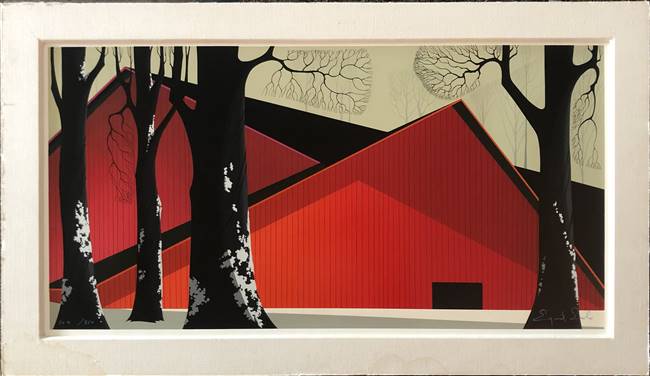
|
A silkscreen printing process using paint rather than ink. A color stencil is created for each color and the paint is wiped or squeegeed through a screen onto the paper beneath.
|
|
Etching
|
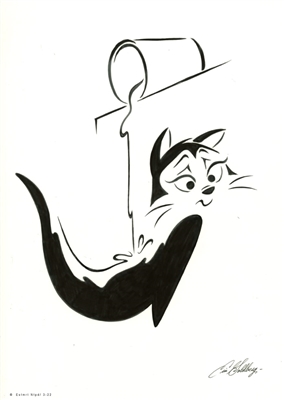
|
An original hand painted etching is created with a steel engraving needle scratched by the artist into a varnish-covered zinc or copper plate. In an acid bath the etch is created to the desired depth. Following the completion of the etch process the plate is cleaned and colored. The printing is then done with a hand driven printing press on wet hand made paper. After drying the etchings are lovingly hand colored with watercolors.
|
|
Additional Art Terms
|
|
Production
|
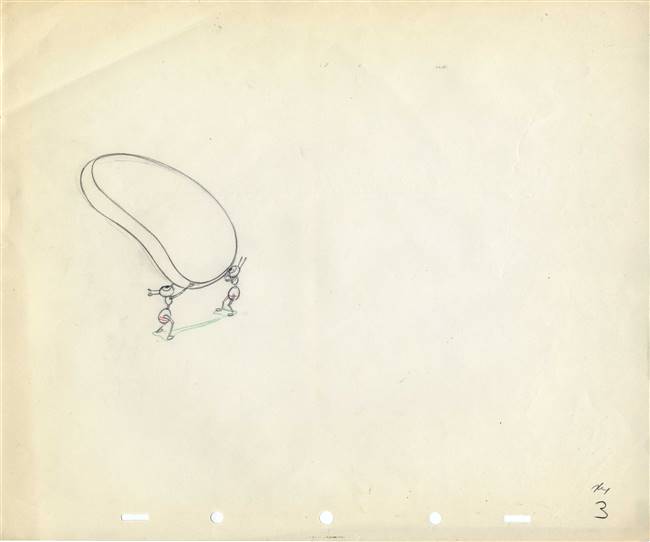
|
Any cel or drawing created for the production of an animated film. Does not necessarily mean that the piece appears in the film. Edited, colour model, and preliminary art are all production artwork.
|
|
12-Field
|
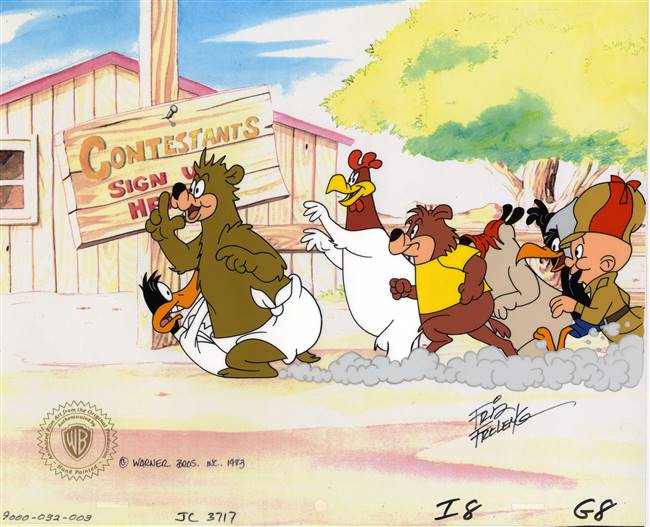
|
Production cel or drawing of of size about 11" x 13"
|
|
16-Field
|
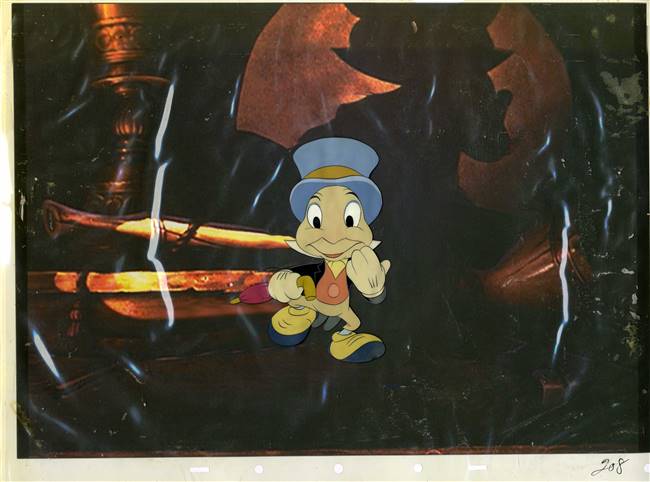
|
Production cel or drawing of size about 13" x 16".
|
|
Pan (Cinemascope)
|
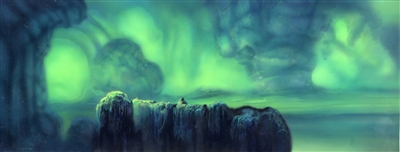
|
Production cel or drawing of size up to 12" x 30". Lady and the Tramp and Sleeping Beauty used this type of artwork.
|
|
Nitrate
|
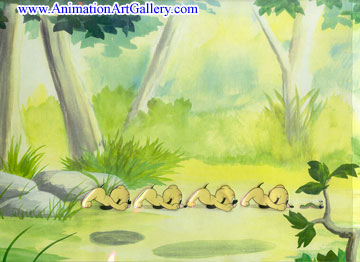
|
Older cels used up until the 1950s (1940s for Disney). Often show signs of aging such as rippling or yellowing.
|
|
Acetate
|
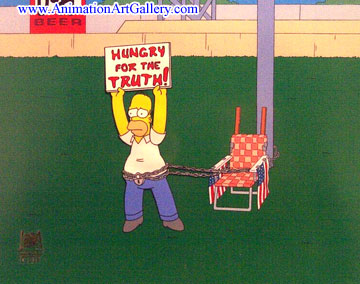
|
Used in the present day. More stable than nitrate.
|
|
"AP" or Artist Proof
|
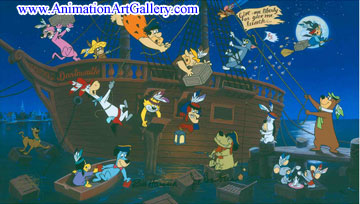
|
Artist Proof is a term used for limited edition or reproduction artwork and refers to the artwork which is visually proofed by the creating artist. They are usually in addition to the regular number of editions, so for example a piece may have 100 regular editions and an additional 10 "AP" versions.
|
|
"HC" or Hors de Commerce
|
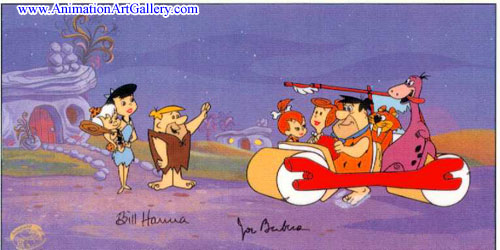
|
Hors de Commerce is a term used for limited edition or reproduction artwork and refers to the artwork which is visually proofed by the publisher or printer. They are usually in addition to the regular number of editions, so for example a piece may have 100 regular editions and an additional 10 "HC" versions.
|
|
Gallery Wrapped Canvas
|
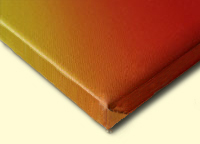
|
Gallery wrapped canvas offers an appealing alternative to framing. The image is extended on the canvas to wrap around the edges of an inner wooden frame and is secured by staples on the back, so that the staples are not visible on the sides. Art is wrapped and ready to hang.
|
|
Stretched Canvas
|
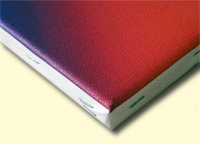
|
Stretched canvases are secured with staples on the sides of the frame and the staples are visible. Stretched canvases are wrapped and ready to frame.
|
|
Hand-Embellished
|
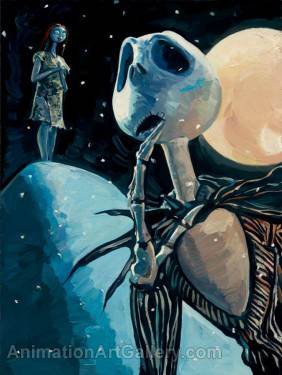
|
A term usually associated with giclee fine art prints. The artist will actually paint on top of the print adding an element of originality to the editions. Occasionally the hand-embellishments are done by a studio artist and not the original artist.
|
|
Estate Signed
|
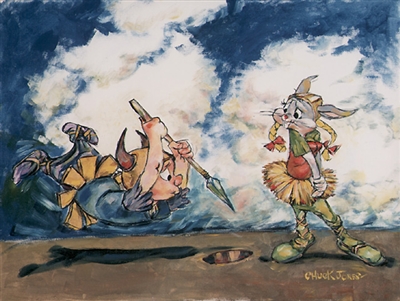
|
A piece produced with the approval of the estate of a deceased artist and signed with a facsimile of the artist's signature.
|